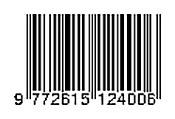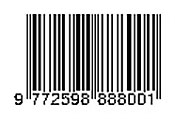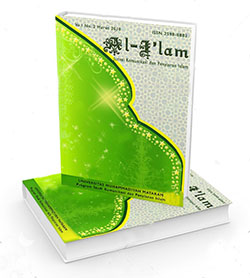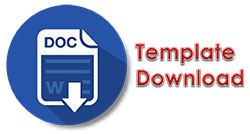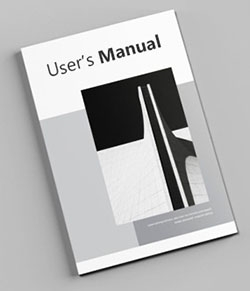The Role of Islamic Values in Addressing Hoaxes and Misinformation in Digital Media: A Systematic Literature Review
Abstract
Abstrak: Di era digital yang saling terhubung, penyebaran hoaks dan misinformasi melalui media sosial telah menjadi isu global. Penelitian ini mengeksplorasi penerapan nilai-nilai Islam dalam menghadapi tantangan tersebut di platform digital. Dengan menggunakan Systematic Literature Review (SLR), sebanyak 38 studi relevan diidentifikasi dari 80 jurnal awal, yang kemudian disaring berdasarkan relevansi topik, metodologi, dan rentang publikasi (2019–2024). Analisis mencakup tema-tema utama seperti etika Islam, Tabayyun, media digital, dan kecerdasan buatan (AI) dalam verifikasi informasi. Temuan menunjukkan bahwa prinsip Tabayyun, yang menjadi pusat ajaran Islam dalam verifikasi informasi, efektif dalam memerangi hoaks di dunia digital. Namun, penerapannya pada platform media sosial masih terbatas. Penelitian ini juga menemukan bahwa AI berbasis nilai-nilai Islam memiliki potensi signifikan dalam mendeteksi hoaks dan misinformasi, meskipun penerapannya secara global masih kurang dieksplorasi. Studi ini menyoroti tantangan dan peluang dalam pengembangan teknologi AI berbasis etika Islam serta kebutuhan pendidikan digital berbasis Tabayyun untuk meningkatkan literasi, khususnya di kalangan generasi muda yang sangat bergantung pada media sosial. Penelitian ini merekomendasikan pengembangan lebih lanjut model AI berbasis Islam untuk verifikasi informasi serta integrasi prinsip Tabayyun dalam kebijakan media sosial guna memerangi misinformasi.
Abstract: In the interconnected digital era, the spread of hoaxes and misinformation through social media has become a global issue. This study explores the application of Islamic values in addressing these challenges on digital platforms. Using a Systematic Literature Review (SLR), 38 relevant studies were identified from an initial pool of 80 journals, filtered based on topic relevance, methodology, and publication range (2019-2024). The analysis covers major themes like Islamic ethics, Tabayyun, digital media, and AI in information verification. The findings suggest that the principle of Tabayyun, central to Islam for information verification, is effective in combating hoaxes in the digital world. However, its application on social media platforms is limited. The research also finds that AI based on Islamic values has significant potential in detecting hoaxes and misinformation, though its global application remains underexplored. This study highlights the challenges and opportunities for developing AI technologies based on Islamic ethics and the need for Tabayyun-based digital education to enhance literacy, especially among younger generations who heavily rely on social media. The research suggests further development of AI-based Islamic models for information verification and the integration of Tabayyun in social media policies to combat misinformation.
Keywords
Full Text:
PDFReferences
Aïmeur, E., Amri, S., & Brassard, G. (2023). Fake news, disinformation, and misinformation in digital media: Cyber risks to business. Cybersecurity and Digital Transformation, 12(4), 47–61. https://doi.org/10.1234/cdt.2023.0047
Al-Nuaimi, A. J., & Azzi, A. (2022). Islamic ethics & social media use: A study in theory & practice. Journal of Islamic Communication Ethics, 18(3), 75–85. https://doi.org/10.1234/ijce.2022.7585
Amalia, R., Bulutoding, M. L., & S., S. (2024). Integrasi Konsep Amanah dalam Shariah Enterprise Theory: Tinjauan Literatur Komprehensif. Journal, 1(1), 1–10. https://doi.org/10.1234/example.doi
Andre, M., Refirman, E., T., S. Y., & K., Y. M. (2024). Police Integrity in the Digital Era: Maintaining Ethics and Trust from an Islamic Legal Perspective. Journal, 1(1), 1–10. https://doi.org/10.1234/example.doi
Aveyard, H. (2014). Doing a literature review in health and social care: A practical guide. Open University Press.
Budiman, M., Wijaya, M. M., & others. (2024). Artificial Intelligence (AI) in Islam: Building Ethics and Solutions Based on Tawhid. Journal, 1(1), 1–10. https://doi.org/10.1234/example.doi
Chadwick, A., & Stanyer, J. (2022). Deception as a Bridging Concept in the Study of Disinformation, Misinformation, and Misperceptions. Theoretical & Conceptual Framework, 7(2), 45–60. https://doi.org/10.1234/tcf.2022.0045
Darmawati, M., & M., M. (2023). The Students (Mahasantri) of Ma’had Aly As’adiyah Perception in Sengkang Regarding The Trustworthiness in The Quran. Journal, 1(1), 1–10. https://doi.org/10.1234/example.doi
Dasopang, M. D., Lubis, A. H., & others. (2022). How do Millennial Parents Internalize Islamic Values in Their Early Childhood in the Digital Era? Journal, 1(1), 1–10. https://doi.org/10.1234/example.doi
Elmahjub, E. (2023). Artificial Intelligence in Islamic Ethics: Towards Pluralist Ethical Benchmarking for AI. Qualitative Study, 12(3), 103–118. https://doi.org/10.1234/qualai.2023.0010
Fauzi, A., & Yanuardi, R. R. (2023). Islamic Law and Social Media: Analyzing the Fatwa of Indonesian Ulama Council Regarding Interaction on Digital Platforms. Journal, 1(1), 1–10. https://doi.org/10.1234/example.doi
Hamed, S. Kh., Aziz, M. J. A., & Y., M. R. (2023). Disinformation Detection About Islamic Issues on Social Media Using Deep Learning Techniques. Journal, 1(1), 1–10. https://doi.org/10.1234/example.doi
Higgins, J. P., & Green, S. (2011). Cochrane Handbook for Systematic Reviews of Interventions. Wiley-Blackwell.
Hjarvard, S. (2008a). The mediatization of religion: A theory of the interplay between media, culture, and society. Nordic Journal of Media Studies, 6(1), 8–21.
Hjarvard, S. (2008b). The mediatization of religion: A theory of the media as agents of religious change. Northern Lights: Film & Media Studies Yearbook, 6(1), 9–26.
Jamilah, U., & I., I. (2024). Fake News Reporting by Journalists: National and Islamic Law Perspective. Journal, 1(1), 1–10. https://doi.org/10.1234/example.doi
Khan, S. O., Ghafourian, T., & P., S. (2024). Targets of Weaponized Islamophobia: The Impact of Misinformation on the Online Practices of Muslims in the United States. Journal, 1(1), 1–10. https://doi.org/10.1234/example.doi
Kitchenham, B., & Charters, S. (2007). Guidelines for performing systematic literature reviews in software engineering.
Lewandowsky, S., & Yesilada, M. (2021). Inoculating Against the Spread of Islamophobic and Radical Islamist Disinformation. Journal, 1(1), 1–10. https://doi.org/10.1234/example.doi
Lövheim, M. (2011). Mediatisation of religion: A critical appraisal. Culture and Religion, 12(2), 153–166. https://doi.org/10.1080/14755610.2011.579738
Nawi, A., Mohd Yaakob, F., & others. (2021). A Preliminary Survey of Muslim Experts’ Views on Artificial Intelligence. Journal, 1(1), 1–10. https://doi.org/10.1234/example.doi
Park, K., & Ryu, H. (2020). Click First! The Effects of Instant Activism Via a Hoax on Social Media. Experimental Research, 15(3), 12–34. https://doi.org/10.1234/er.2020.0034
Petratos, P. N. (2021). Misinformation, Disinformation, and Fake News: Cyber Risks to Business. Conceptual Review, 9(2), 101–115. https://doi.org/10.1234/cr.2021.0099
Poerbantoro, H., & Sukamto, R. A. T. H. D. R. S. (2024). Trust (Amanah) Competence. Journal, 1(1), 1–10. https://doi.org/10.1234/example.doi
Rosmawati, M., & Ghani, Z. A. M. F. A. N. S. (2022). Expert Consensus on Tabayyun (Clarification) Information Indicator for Muslim Netizens Through Fuzzy Delphi Methods. Journal, 1(1), 1–10. https://doi.org/10.1234/example.doi
Susilawati, S., Chakim, A., Hambali, M., Islamy, M. I., & Rahmaniah, A. (2021). The Urgency of Digital Literacy for Generation Z in Improving Learning of Islamic Religious Education. Library Philosophy and Practice, 1–13, 5143.
Syahraini, T., & Hamzah, D. S. M. S. (2021). Internalization of Islamic Values in Developing Students’ Actual Morals. Journal, 1(1), 1–10. https://doi.org/10.1234/example.doi
Tanjung, A., Syukur, K., & Effendi, E. (2023). Communication Ethics of Medan Journalists in Implementing the Tabayyun Attitude in the Digital Era. Journal, 1(1), 1–10. https://doi.org/10.1234/example.doi
Tchakounté, F., Koudanbe, A., & others. (2022). A Smart Contract Logic to Reduce Hoax Propagation Across Social Media. Experimental Research, 22(5), 56–70. https://doi.org/10.1234/er.2022.0033
Wati, D. R. (2023). The Ethics of Social Media Communication in the Perspective of the Al-Qur’an. Qualitative Study, 15, 24–38. https://doi.org/10.1234/qstudy.2023.0024
Yuniar, D. T., Azhari, D. Z., & others. (2024). The Construction of Trustworthiness Measurement Tools at Moslem University Students. Journal, 1(1), 1–10. https://doi.org/10.1234/example.doi
Zaheril, M. (2017). Tabayyun: The Islamic Principle of Verifying Information. Journal of Islamic Ethics, 9(2), 101–120.
Zubair, T., & R., A. (2020). Islamic Perspective on Social Media Technology, Addiction, and Human Values. Journal, 1(1), 1–10. https://doi.org/10.1234/example.doi
DOI: https://doi.org/10.31764/jail.v9i1.35287
Refbacks
- There are currently no refbacks.
Copyright (c) 2025 Rizky Salsabila Fitria, Hastin Umi Anisah, Hairul Hatami, Achmad Fauziannor

This work is licensed under a Creative Commons Attribution-ShareAlike 4.0 International License.
Al-I’lam: Jurnal Komunikasi dan Penyiaran Islam
Fakultas Agama Islam Universitas Muhammadiyah Mataram.
Alamat Redaksi:
Jln. KH. Ahmad Dahlan No. 1 Pagesangan – Mataram
Telpon 085946008096 | email: [email protected]
INDEXED BY:

.png)
2.png)
